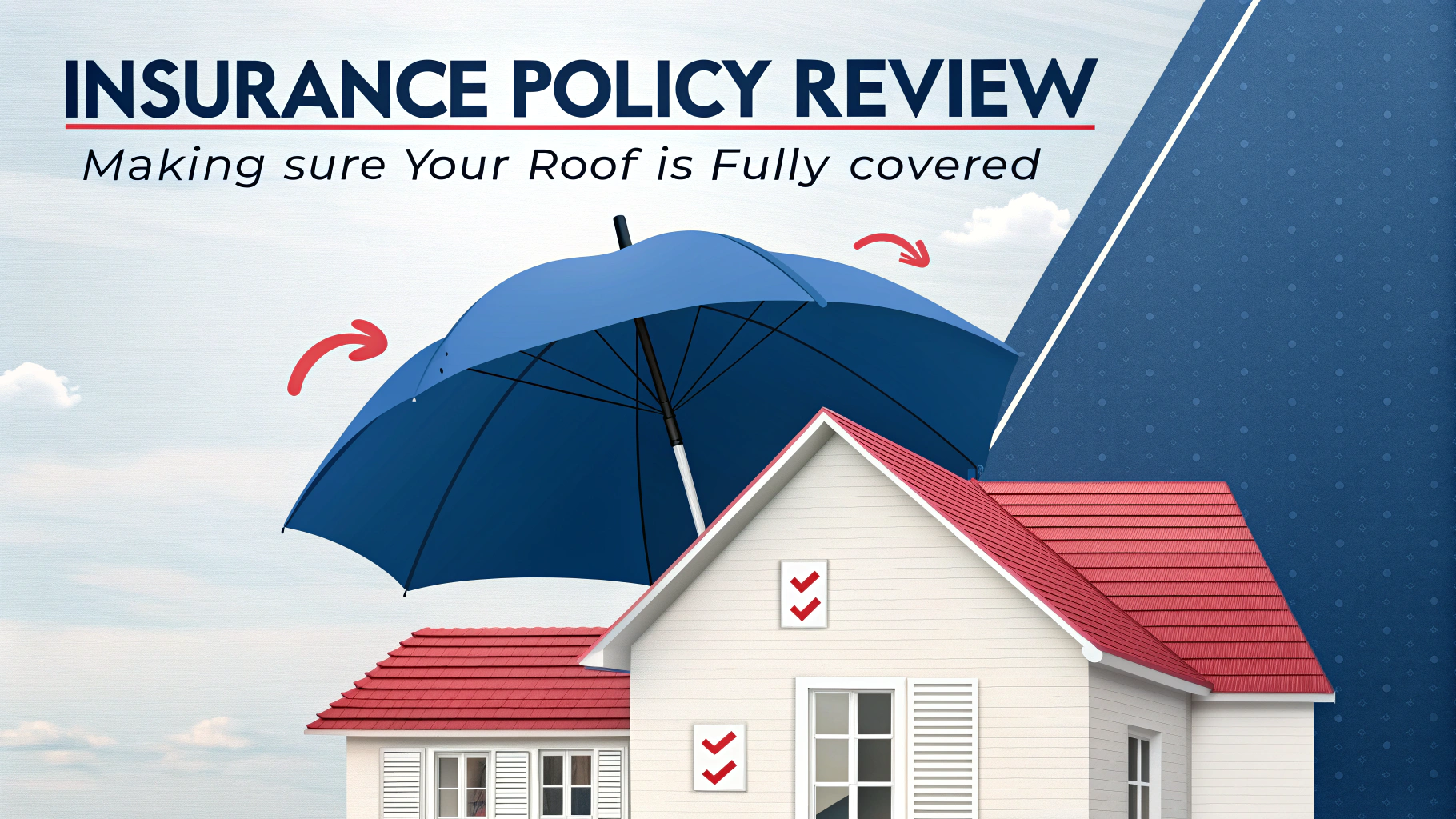Regular reviews of your insurance policy can prevent costly surprises when you need to file a roof damage claim.
Understanding the specifics of your roof coverage helps you make informed decisions about repairs and replacements before problems escalate.
This guide breaks down the key elements of roof insurance coverage and provides actionable steps to ensure your home is properly protected.
Key Components of Roof Insurance Coverage
- Age of roof and depreciation calculations
- Coverage types (replacement cost vs. actual cash value)
- Named perils vs. all-perils coverage
- Deductible amounts and options
- Exclusions and limitations
Common Coverage Types
Replacement Cost Value (RCV) provides coverage for the full cost of replacing your roof with similar materials.
Actual Cash Value (ACV) factors in depreciation, resulting in lower payouts for older roofs.
What’s Typically Covered
- Storm damage (wind, hail)
- Fallen tree damage
- Fire damage
- Vandalism
- Sudden accidents
Common Exclusions
Standard policies often exclude:
- Normal wear and tear
- Improper maintenance
- Neglect
- Manufacturer defects
Documentation Requirements
- Regular inspection reports
- Maintenance records
- Photos of roof condition
- Professional assessment documentation
Tips for Maximum Coverage
Schedule professional inspections twice yearly, especially after severe weather events.
Keep detailed maintenance records and photos of your roof’s condition.
Consider additional coverage riders for enhanced protection against specific risks.
Working with Insurance Adjusters
| Do | Don’t |
|---|---|
| Document all damage thoroughly | Make repairs before inspection |
| Get independent assessments | Accept first offer without review |
| Keep all communication records | Sign documents without understanding |
Steps to Review Your Policy
- Check coverage limits and deductibles
- Review excluded perils
- Understand depreciation calculations
- Verify coverage for local weather risks
- Compare policy options from different insurers
Protecting Your Investment
Contact your insurance provider to review your current coverage and discuss potential upgrades.
For Colorado residents, connect with local insurance agents who understand regional weather patterns and risks.
Consider scheduling a professional roof inspection by calling (303) 555-0123 for a detailed assessment of your roof’s condition.
Filing a Claim Successfully
Document damage immediately after discovering it, taking photos from multiple angles. Contact your insurance provider within 24-48 hours of identifying the damage.
- Take detailed photos and videos
- Secure temporary repairs if needed
- Keep all receipts for reimbursement
- File claim promptly
Maintenance Best Practices
Regular maintenance extends roof life and ensures continued coverage eligibility.
Seasonal Checklist
- Clear gutters and downspouts
- Remove debris from roof surface
- Check for loose or damaged shingles
- Inspect flashing and seals
Cost-Saving Strategies
- Bundle insurance policies
- Install impact-resistant materials
- Maintain good credit score
- Choose higher deductibles strategically
Securing Your Roof’s Future
Regular policy reviews and proactive maintenance create a strong foundation for protecting your home investment. Work closely with qualified professionals and your insurance provider to ensure comprehensive coverage that meets your specific needs.
Remember that the best insurance policy is one that matches your roof’s characteristics and your area’s weather patterns while providing peace of mind through adequate coverage.
Schedule your next roof inspection and policy review today to maintain optimal protection for your home’s most critical component.
FAQs
- What types of roof damage are typically covered by homeowners insurance in Colorado?
Most insurance policies cover damage from sudden events like hail, wind, falling trees, fire, and the weight of snow or ice. However, coverage may vary by policy. - How long do I have to file an insurance claim for roof damage in Colorado?
In Colorado, you typically have 365 days from the date you discover the damage to file a claim, but it’s best to file as soon as possible after identifying the damage. - Does insurance cover roof replacement due to normal wear and tear?
No, standard homeowners insurance policies don’t cover damage from normal aging, wear and tear, or lack of maintenance. These are considered homeowner responsibilities. - What documentation do I need when filing a roof damage claim?
You’ll need photos of the damage, maintenance records, age of the roof, previous repair records, and documentation of the event that caused the damage (weather reports, etc.). - How does my roof’s age affect insurance coverage?
Older roofs may receive actual cash value (ACV) coverage instead of replacement cost value (RCV), meaning depreciation is factored into the claim payment. - Will filing a roof claim increase my insurance premiums?
Possibly. Weather-related claims may impact rates, but Colorado law prevents insurers from canceling policies solely based on first-time weather-related claims. - What is the difference between ACV and RCV coverage for roofs?
RCV pays for the full cost to replace your roof at current prices, while ACV pays the depreciated value based on the roof’s age and condition. - Are there specific requirements for roofing materials under Colorado insurance policies?
Many insurers require impact-resistant materials in Colorado due to frequent hail storms, and using these materials may qualify for premium discounts. - Should I get a professional roof inspection before purchasing insurance?
Yes, a professional inspection can document your roof’s condition, identify existing issues, and help ensure proper coverage levels when obtaining new insurance. - What happens if my insurance claim for roof damage is denied?
You can appeal the decision, provide additional documentation, get a second professional opinion, or file a complaint with the Colorado Division of Insurance if you believe the denial was unjustified.
